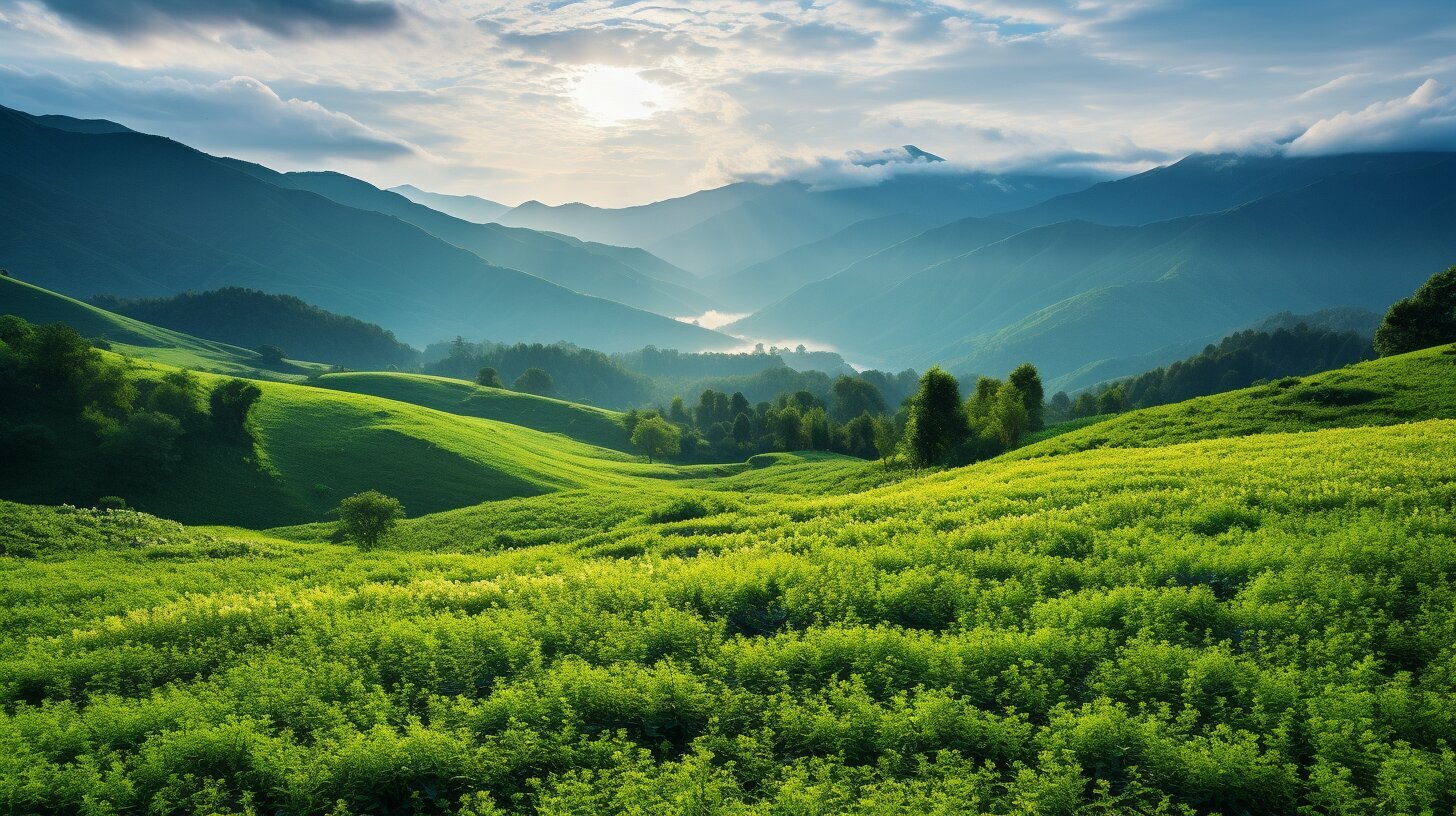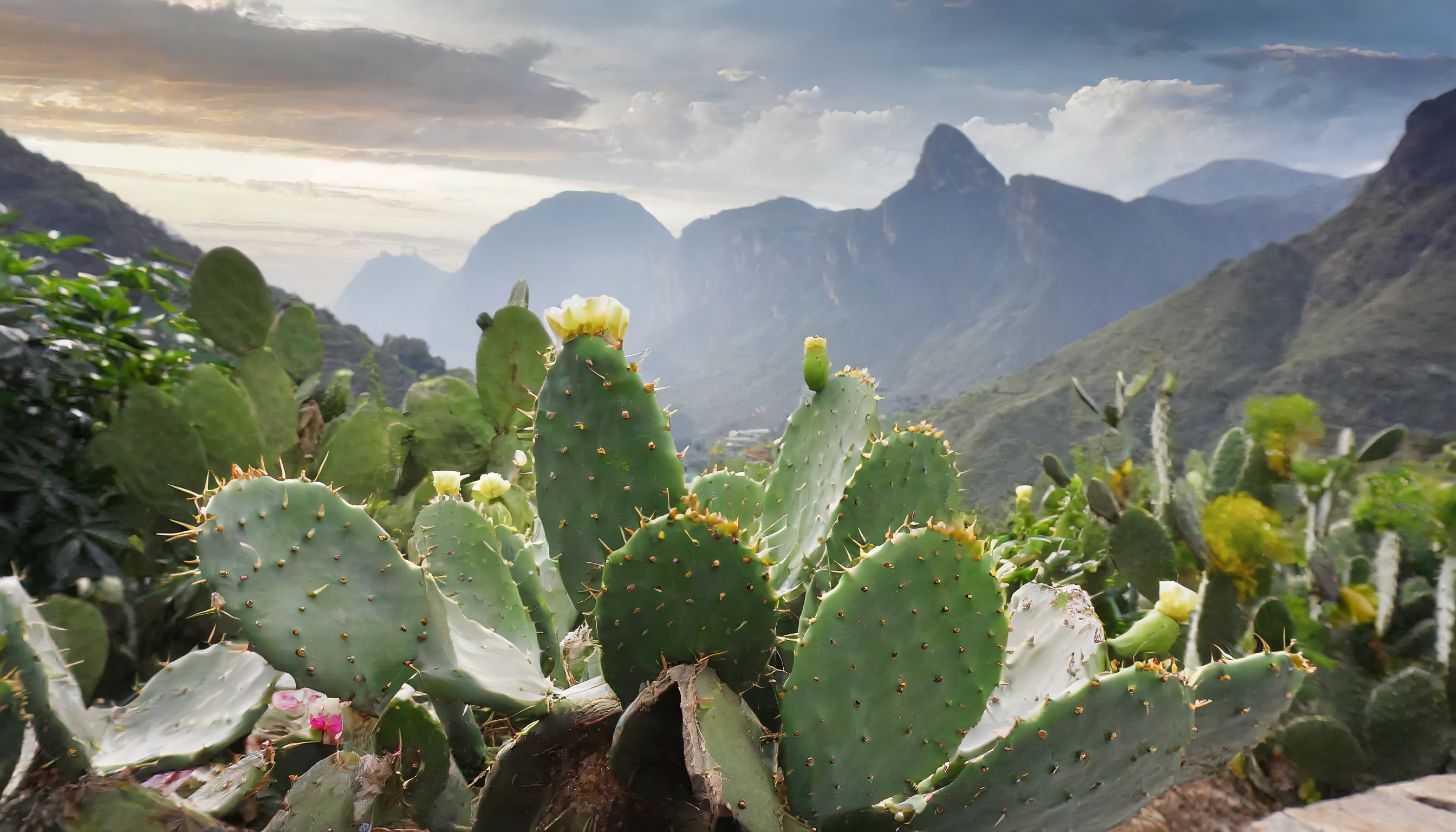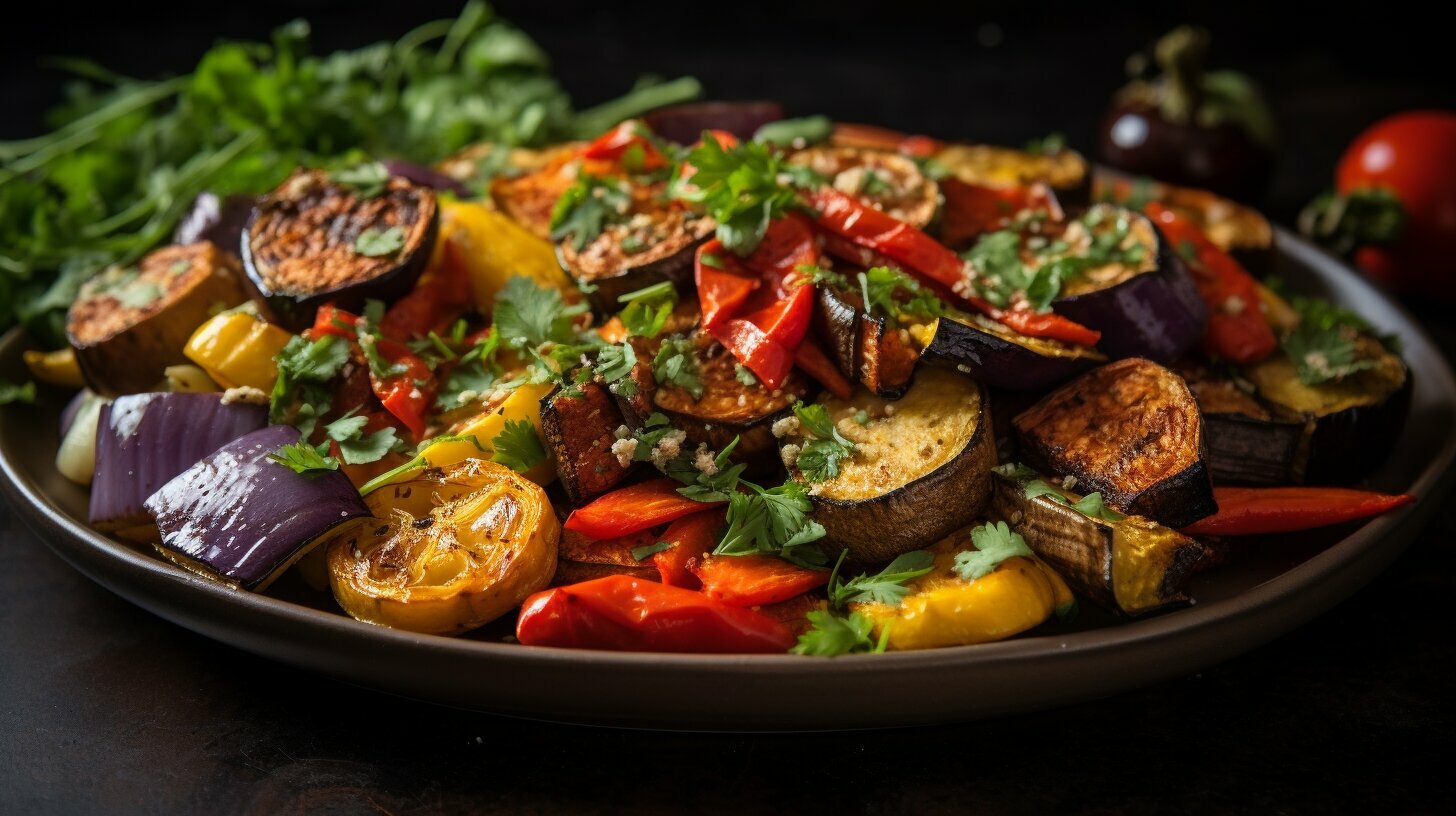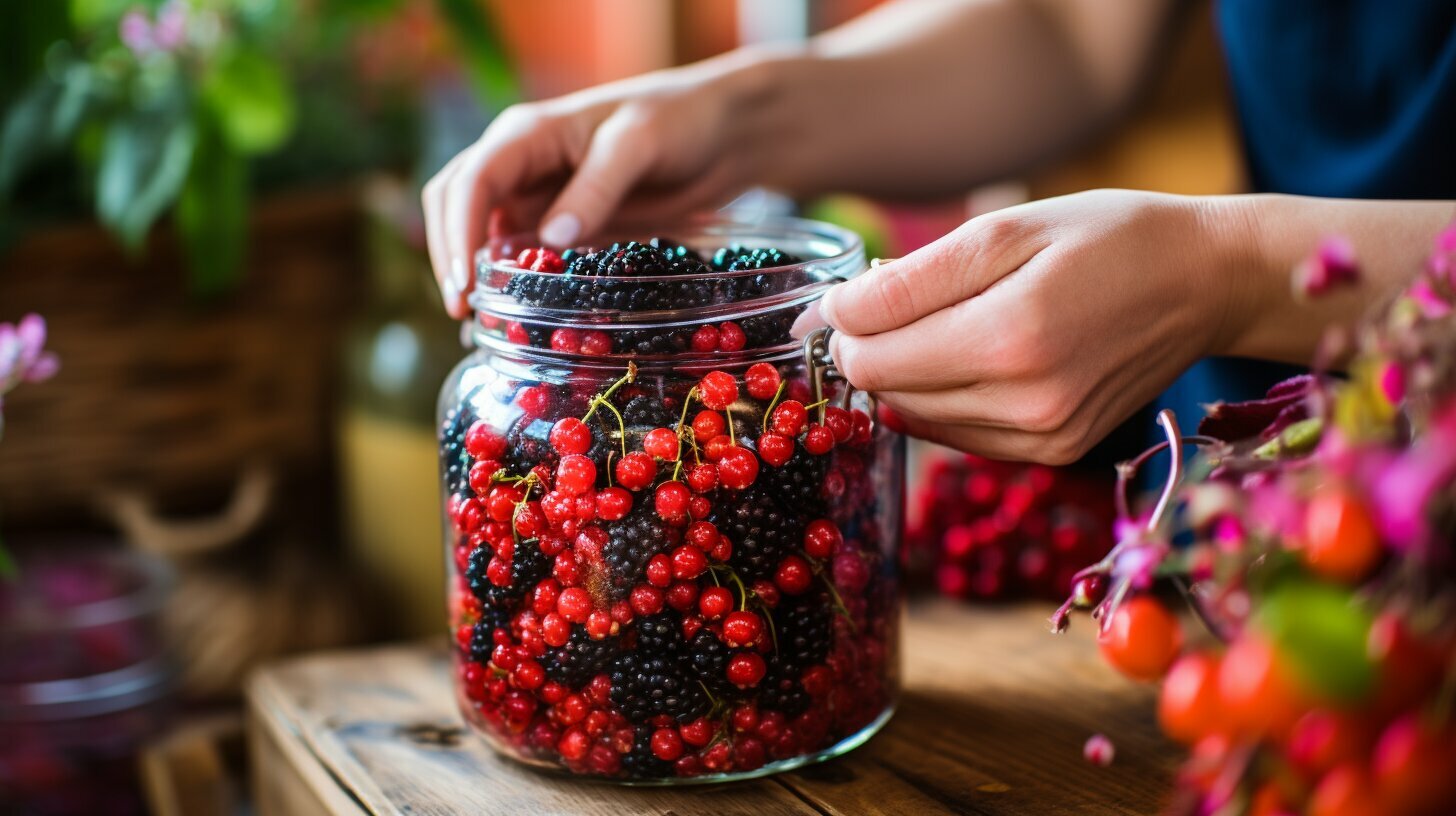If you’re looking to add some extra flavor and nutrition to your cooking, why not try incorporating wild herbs? These all-natural botanicals not only taste delicious but are also packed with health benefits.
From savory marinades to sweet desserts, wild herbs can be used in a variety of dishes to elevate their flavor and nutritional profile. And the best part? You can forage many of these herbs right in your own backyard or local area.
In this article, we’ll explore the world of wild herb recipes, from foraging tips to creative culinary uses. Get ready to expand your cooking repertoire and taste buds!
Key Takeaways
- Wild herbs are a flavorful and all-natural addition to your cooking.
- You can forage many wild herbs in your own backyard or local area.
- Wild herb recipes can be used in a variety of dishes and offer health benefits.
Exploring the World of Wild Herbs
If you’re looking to add some excitement to your culinary creations, look no further than the world of wild herbs. From peppery watercress to citrusy sorrel, wild herbs offer a range of flavors and textures to elevate your dishes. In addition to their delicious taste, wild herbs can provide health benefits, making them a natural and nutritious addition to any meal.
When it comes to culinary uses for wild herbs, the possibilities are endless. Whether you’re cooking with foraged herbs or looking for inspiration for your next DIY wild herb recipe, there’s no shortage of options to explore. Some popular uses for wild herbs include:
Disclosure: When you buy through links on our site, we may earn an affiliate commission.
- Adding them to salads for a fresh burst of flavor
- Using them to flavor soups and stews
- Infusing oils and vinegars for use in dressings and marinades
- Making pestos and sauces for pasta dishes and spreads
- Creating herb-infused salts and sugars for use in baking and cooking
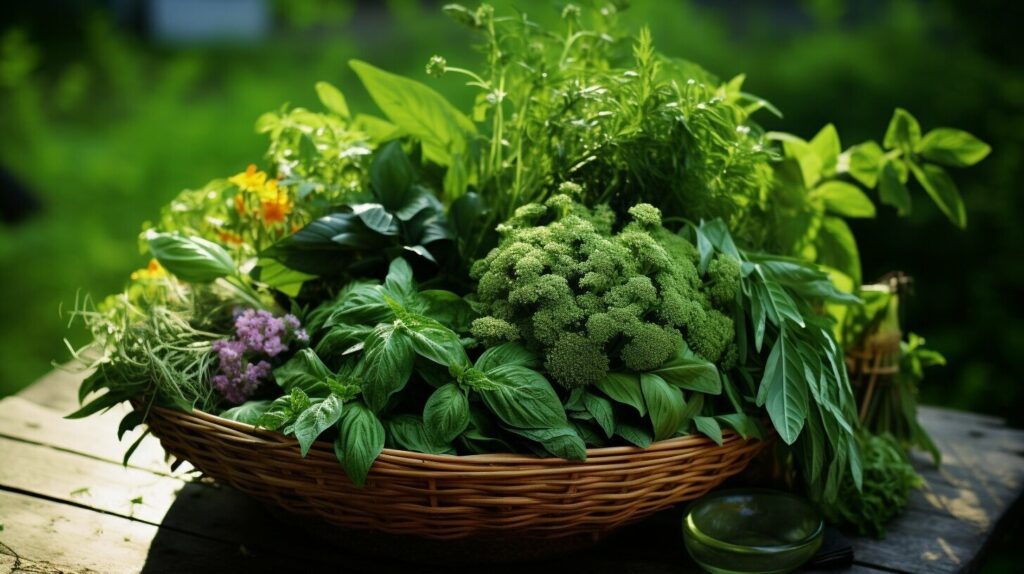
Wild herbs come in a variety of types, each with its own unique flavor and culinary application. Some examples of commonly used wild herbs include:
| Herb | Flavor | Culinary Uses |
|---|---|---|
| Dandelion | Bitter, earthy | Salads, teas |
| Chicory | Bitter, nutty | Coffee substitute, salads |
| Watercress | Peppery, tangy | Salads, sandwiches, soups |
| Sorrel | Citrusy, sour | Salads, soups, sauces |
When cooking with foraged herbs, it’s important to follow safe harvesting practices. Make sure to properly identify the herbs and only collect from areas that are free of pollution and pesticides. A helpful tip is to use a guidebook or app to ensure you are collecting the correct plant and not a look-alike.
So go ahead and explore the world of wild herbs to discover new culinary heights in your cooking. With so many delicious and nutritious options to choose from, you’re sure to find a wild herb recipe that will become a staple in your kitchen.
Dandelion
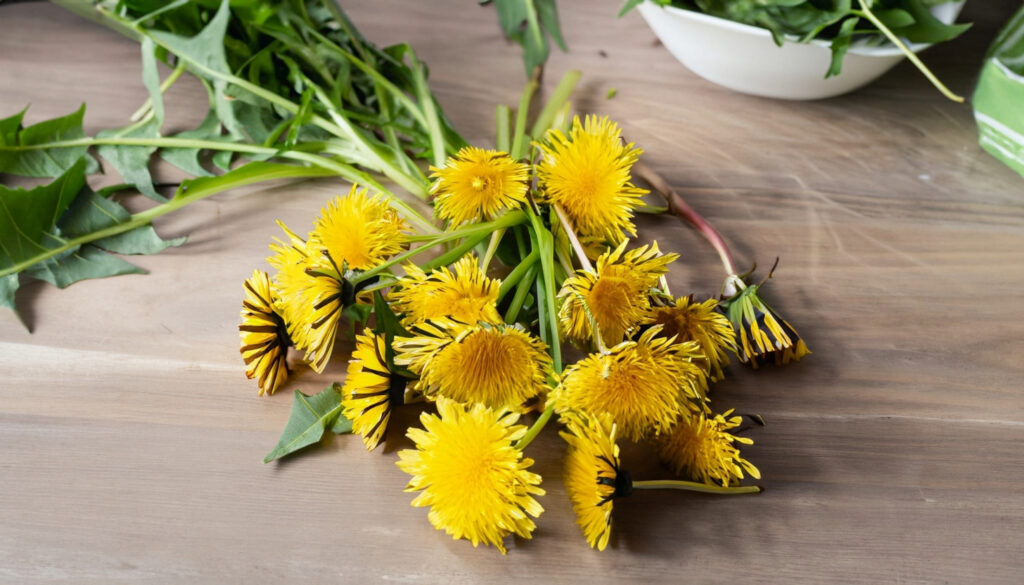
Chicory
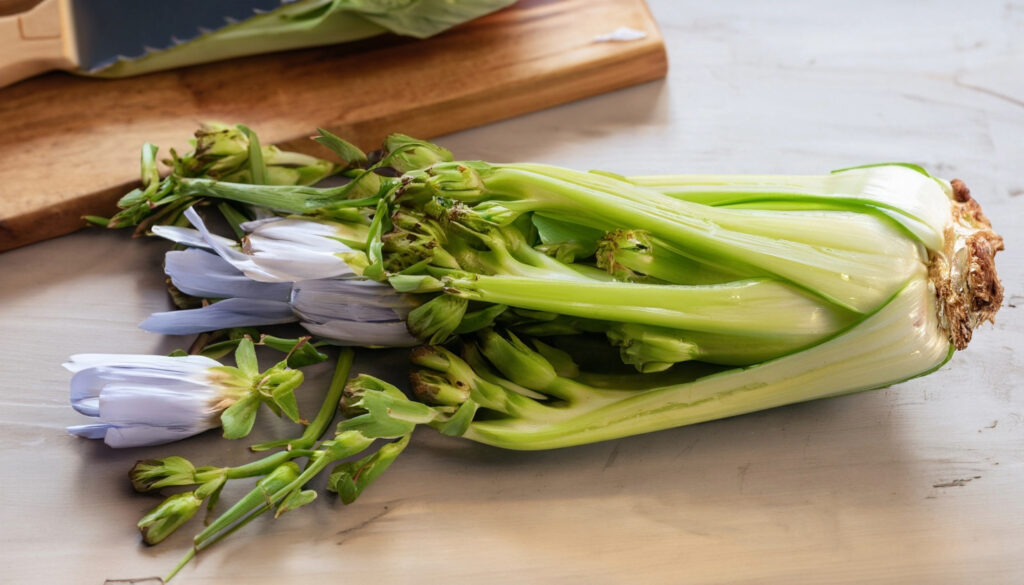
Watercress
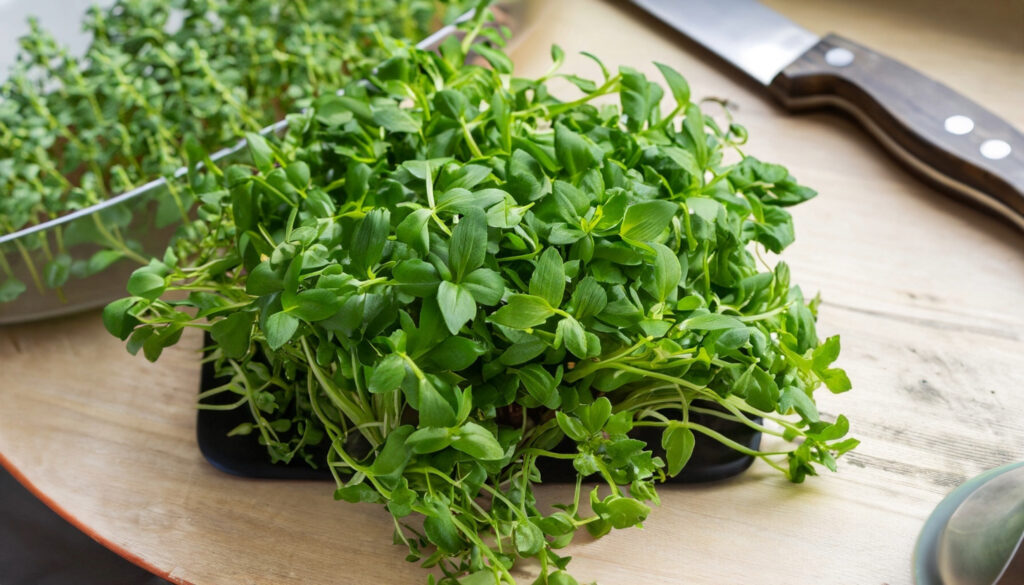
Sorrel
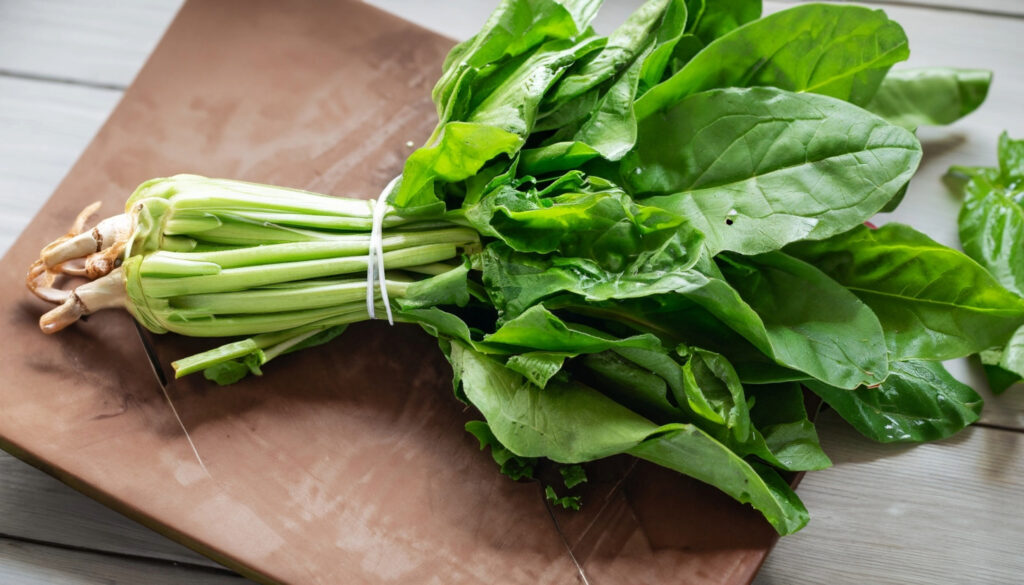
Foraging for Wild Herbs: Tips and Tricks
If you’re new to foraging, it’s important to start with the basics. Here are some essential tips and tricks for safely and sustainably gathering wild herbs.
1. Know what you’re looking for
Before you head out into the wild, familiarize yourself with the types of wild herbs that grow in your area. Use field guides or online resources to learn how to identify them by their leaves, stems, and flowers. Make sure you can distinguish between edible and poisonous plants.
2. Choose the right location
Look for areas that haven’t been sprayed with herbicides or pesticides. Avoid areas near busy roads or polluted streams. National parks and nature preserves are good places to start.
3. Harvest at the right time
Wild herbs are best harvested in the morning, when their oils are at their most potent. Always choose healthy plants and avoid picking from areas where the population is thin or endangered. Harvest only what you need, leaving some plants for future growth and for the benefit of wildlife.
4. Handle with care
When harvesting wild herbs, be gentle and careful to avoid damaging the plant or its surrounding environment. Use clean, sharp scissors or pruning shears to clip the leaves or stems without tearing them. Carry the herbs in a basket or paper bag to avoid crushing them.
5. Clean and store properly
When you get home, rinse the herbs gently in cold water to remove any dirt or insects. Pat them dry with a towel or let them air dry. Store them in a glass jar or plastic bag in the refrigerator for up to a week, or freeze them for longer storage.
Foraging for wild herbs can be a rewarding and sustainable way to add unique flavors to your cooking. By following these tips and tricks, you’ll be on your way to creating your own DIY wild herb recipes in no time.
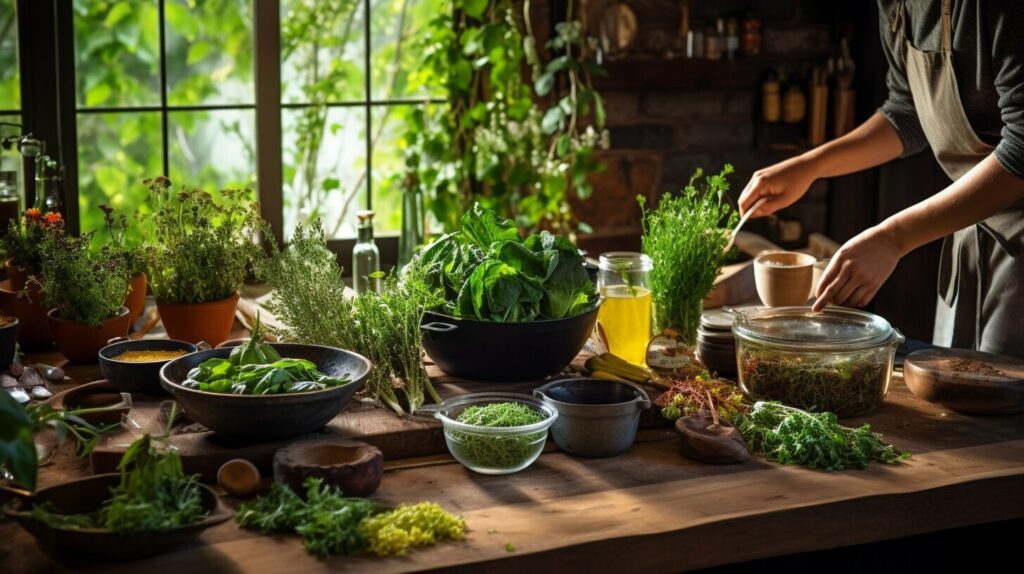
Infusing Flavor with Wild Herb Oils and Vinegars
Herb-infused oils and vinegars are a fantastic way to add flavor to any dish. And if you’re looking for a way to take this to the next level, using wild herbs can be the perfect solution. By infusing oils and vinegars with wild herbs, you can create flavorful and unique meal additions. Whether you use them for cooking, dipping, or dressing, these infusions will add a new level of complexity and depth to your dishes.
Creating herb-infused oils and vinegars is a relatively simple process. First, choose your herbs. You can use a single herb or create a blend of different herbs. Some of the most popular wild herbs for infusions include rosemary, thyme, and sage. You can also try more exotic herbs like lemon balm, catnip, or sweet cicely. Once you have your herbs, you will need a base oil or vinegar.
For oils, choose a neutral oil like grapeseed or sunflower oil. For vinegars, choose a light-colored vinegar like white wine or rice vinegar. Next, wash and dry your herbs thoroughly. Bruise the herbs slightly to release their flavors, then place them in a sterilized jar. Pour the oil or vinegar over the herbs until they are fully submerged.
Seal the jar and store it in a dark, cool place, like a cupboard or pantry, for at least a week. The longer you leave it, the more intense the flavor will become. When your oil or vinegar has reached your desired flavor intensity, strain the herbs and store the oil or vinegar in a clean, sterilized bottle.
Creating herb-infused oils and vinegars using wild herbs can be both fun and inspiring. You can experiment with different herbs and blends to create your own signature infusions. Use them to add flavor to roasted vegetables, grilled meats, or salads. Or, simply pour over a warm crusty bread for a flavorful appetizer. The possibilities are endless, and the results are always delicious.

Wild Herb Pestos and Sauces
When it comes to flavorful herb-infused meals, pestos and sauces are a go-to choice. Wild herbs add a unique twist to traditional recipes, creating mouthwatering dishes that are both healthy and delicious. Below are some wild herb pesto and sauce recipes for you to try:
Wild Garlic Pesto
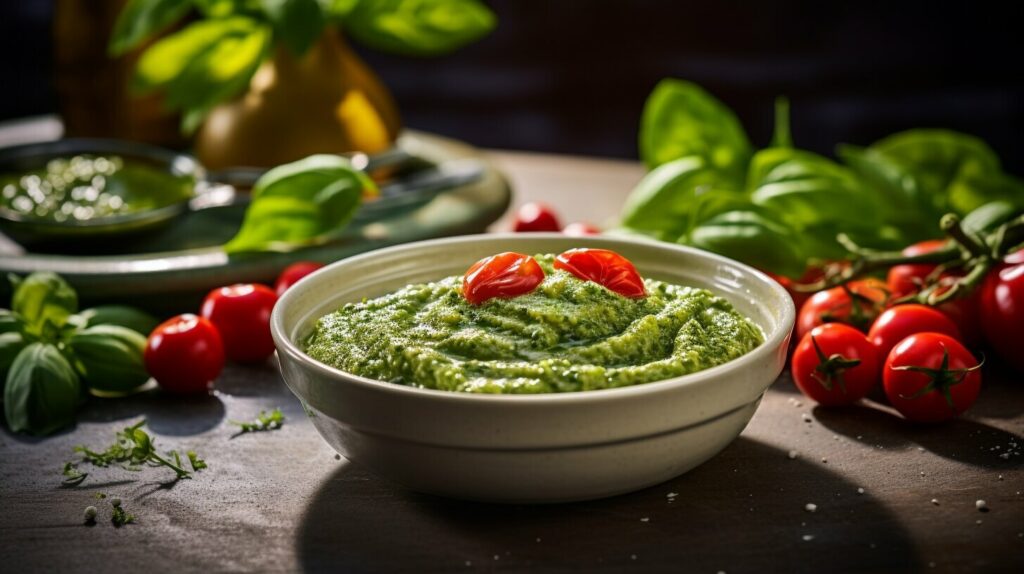
Wild garlic is abundant in the spring and can be found in wooded areas and fields. This pesto is a great addition to pasta or as a spread on a sandwich.
| Ingredients: | 1 cup wild garlic leaves 1/2 cup walnuts 1/2 cup grated Parmesan cheese 1/2 cup olive oil Salt and pepper to taste |
| Directions: | 1. Rinse the wild garlic leaves and pat dry. 2. Blend the wild garlic leaves, walnuts, and Parmesan cheese in a food processor until finely chopped. 3. Slowly add the olive oil while blending until the mixture is smooth. 4. Season with salt and pepper to taste. |
Chimichurri Sauce
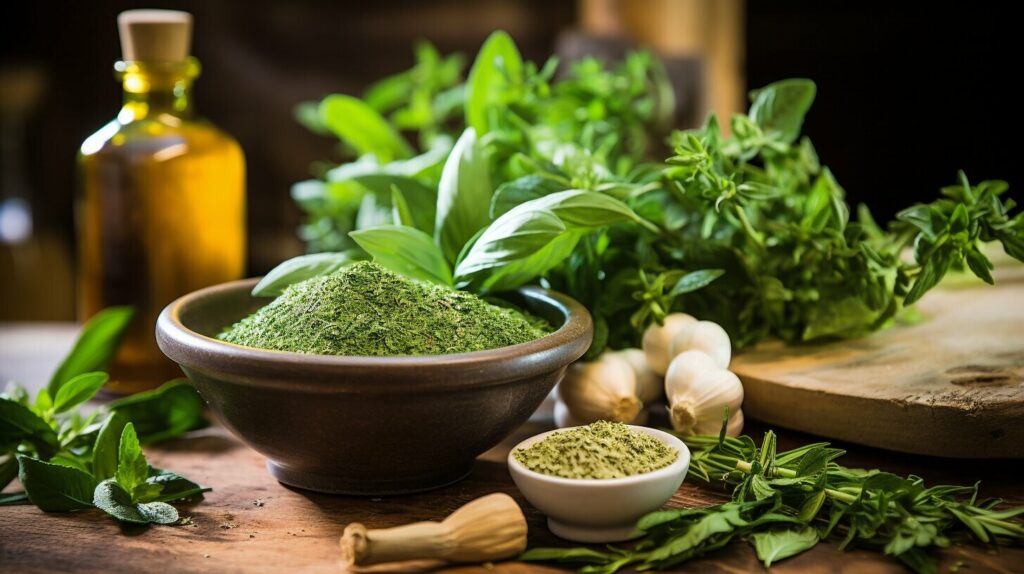
This herbaceous sauce is a staple in Argentinian cuisine and pairs well with grilled meats and vegetables.
| Ingredients: | 1 cup chopped parsley 1/2 cup chopped cilantro 1/4 cup chopped oregano 3 garlic cloves, minced 1 red chili pepper, seeded and minced 1/2 cup olive oil 2 tablespoons red wine vinegar Salt and pepper to taste |
| Directions: | 1. Mix together the parsley, cilantro, oregano, garlic, and red chili pepper in a bowl. 2. Add the olive oil and red wine vinegar and stir to combine. 3. Season with salt and pepper to taste. |
These are just a few examples of the many wild herb pestos and sauces that you can create. Experiment with different combinations of herbs to create your own flavorful creations. With these wild herb recipe inspirations, you’ll be able to add a unique twist to your meals and impress friends and family with your culinary skills.
Wild Herb Marinades and Rubs
If you’re looking for a way to add bold and exciting flavors to your grilled or roasted dishes, look no further than wild herb marinades and rubs. Infusing your meats and vegetables with the flavors of wild herbs is a simple and delicious way to elevate your cooking.
To create a marinade, simply mix together your favorite wild herbs with oil, vinegar, and any other seasonings you like. Allow your meat to marinate in the mixture for at least an hour before cooking to ensure the flavors are absorbed.
If you prefer a dry rub, combine your chosen herbs with a mixture of salt, pepper, and other spices, then rub it into your meat. This method creates an aromatic crust around the meat, which adds amazing depth of flavor.
Some flavorful wild herbs to consider when making marinades and rubs include rosemary, thyme, sage, and oregano. These herbs pair well with a variety of meats and can be combined with other ingredients like garlic, lemon, and honey for added depth.
To get your creative juices flowing, try out this recipe for a wild herb rub:
| Ingredients: | 2 tablespoons dried rosemary 2 tablespoons dried thyme 2 tablespoons dried oregano 1 tablespoon garlic powder 1 tablespoon onion powder 1 teaspoon salt 1 teaspoon black pepper |
| Instructions: | 1. In a small bowl, combine all ingredients. 2. Rub mixture onto your meat of choice. 3. Let the meat sit for at least 30 minutes before cooking. |
Wild herb marinades and rubs are an excellent way to add a burst of flavor to any dish. Experiment with different combinations of herbs and spices to create your own unique flavor profiles. Your taste buds (and dinner guests) will thank you!
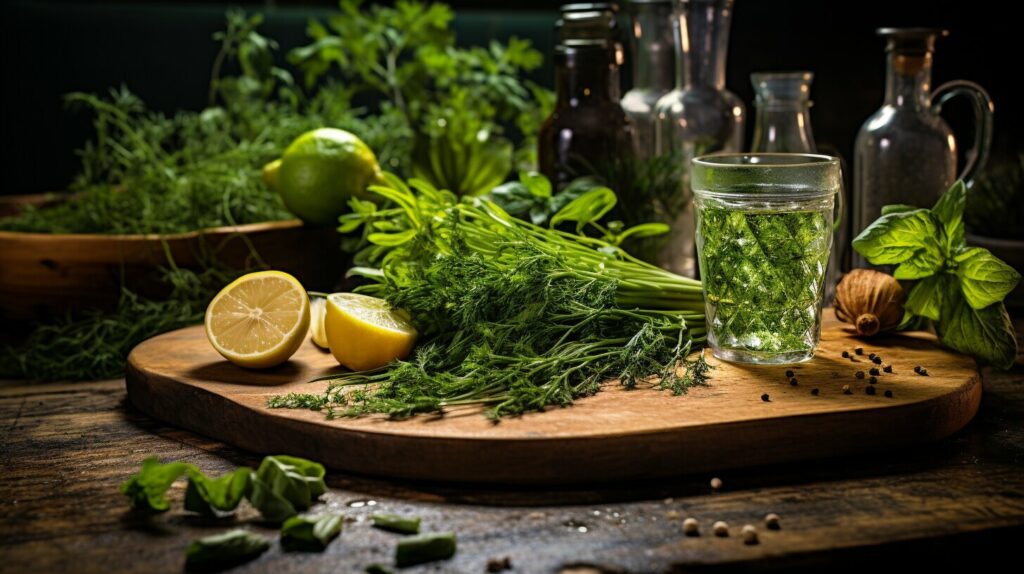
Wild Herb Soups and Stews
Wild herbs can add incredible depth and flavor to comforting soups and stews. These dishes are perfect for chilly nights and are a great way to experiment with different herb combinations.
One classic soup that can benefit from the addition of wild herbs is chicken noodle soup. Simply add a handful of chopped wild herbs, such as thyme, rosemary, and sage, to the broth for a delicious twist on a traditional favorite.
Another option is to create a flavorful vegetable soup using a variety of wild herbs. Try combining herbs such as basil, oregano, and parsley with seasonal vegetables like carrots, zucchini, and potatoes.
If you’re feeling adventurous, consider making a wild game stew using foraged herbs. Add herbs like juniper berries, bay leaves, and wild garlic to a hearty stew made with venison or rabbit for a truly unique and delicious meal.
Not only are these soups and stews delicious, but they can also be incredibly healthy and comforting. Experiment with different herb combinations to find your favorite flavor profile.
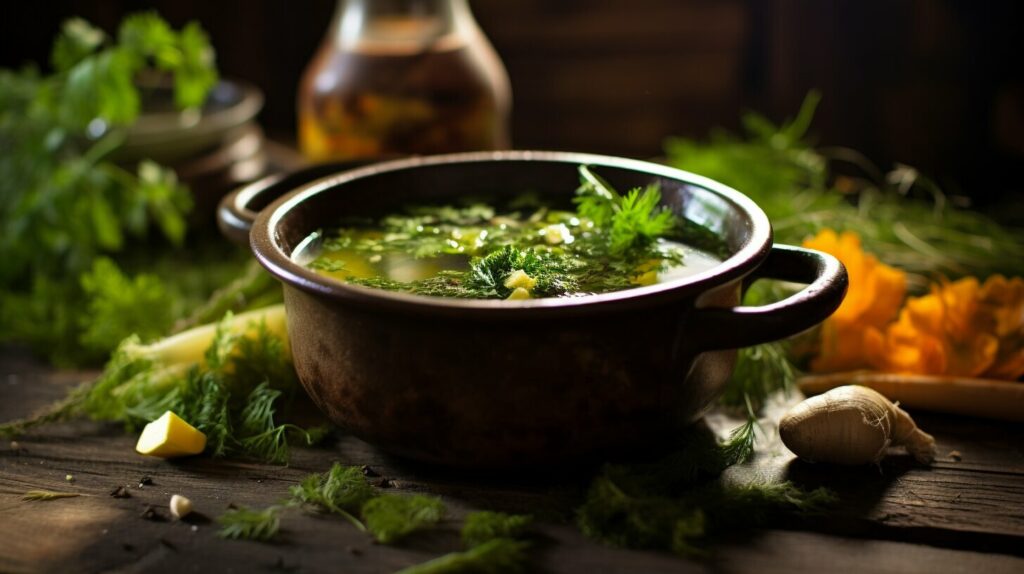
Tip: When foraging for wild herbs, be sure to carefully identify them and only harvest what you need. Always follow sustainable foraging practices to ensure that the herbs will continue to thrive for years to come.
Wild Herb Salads and Dressings
Who says salads have to be boring? Take your salads to the next level by incorporating wild herbs into your dressings. Not only do they add a unique flavor, but they also provide a healthy dose of nutrients. Wild herbs such as dandelion, chickweed, and violet make great additions to your salads.
One delicious salad recipe to try is the wild greens salad. Mix greens such as arugula, mustard greens, and watercress with a handful of foraged wild herbs. Top with a simple dressing made with olive oil, apple cider vinegar, and chopped wild herbs.
| Why use wild herbs in salads: | 1. They add unique flavor |
|---|---|
| 2. They are packed with nutrients | |
| 3. They offer a variety of textures |
For a creamy dressing, try making a wild herb ranch dressing. Combine Greek yogurt, mayonnaise, chopped herbs such as chives, parsley, and thyme, and a splash of apple cider vinegar. This dressing goes well with a classic wedge salad or as a dip for crudites.
Not in the mood for a salad? Use wild herb dressings as a marinade for meats or drizzle over roasted vegetables. The possibilities are endless!
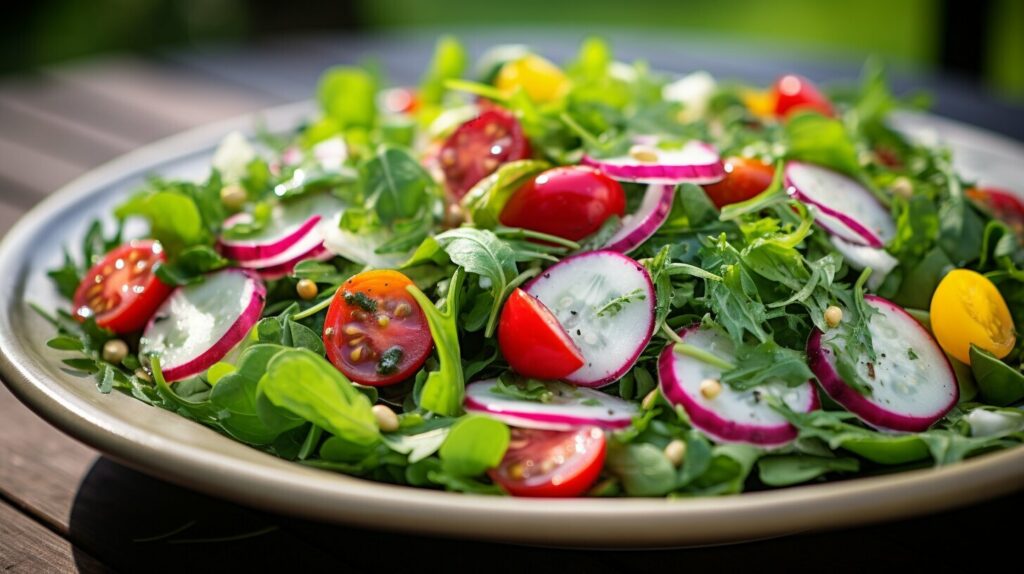
Next time you’re at the farmers market or taking a walk in the woods, keep an eye out for wild herbs to incorporate into your salads and dressings. Your taste buds and body will thank you!
Baking with Wild Herbs
Who says wild herbs are only for savory dishes? Adding herbs to baked goods can create unique and flavorful treats that will impress your family and friends. Not only will you wow them with your creativity, but you’ll also be adding a healthy twist to your baked goods. Here are some wild herb baking recipe ideas to get you started:
- Herb-Infused Olive Oil Bread: Infuse your bread dough with wild herbs by adding them to a mixture of olive oil and garlic. The result is a fragrant and flavorful bread with a crispy crust.
- Rosemary and Lemon Biscotti: Add fresh rosemary and lemon zest to your biscotti for a refreshing twist on this classic treat. Serve with a cup of tea for an afternoon snack.
- Thyme and Honey Cornbread: Adding thyme and honey to your cornbread recipe will take it to the next level. Serve with a dollop of butter and a drizzle of honey for a sweet and savory treat.
- Lavender Shortbread Cookies: Infuse your shortbread cookies with dried lavender for a delicate and floral flavor. Serve with a cup of Earl Grey tea for a sophisticated afternoon tea.
These wild herb baking recipes are just the tip of the iceberg. Experiment with different combinations of herbs and baked goods to create your own unique recipes. The possibilities are endless!

Preserving the Freshness: Wild Herb Infused Salt and Sugar
If you have foraged an abundance of wild herbs and want to extend their shelf life, consider making herb-infused salt and sugar. These DIY recipes are simple to make and can add depth and flavor to your dishes all year round.
Culinary uses for wild herbs: Salt and sugar are versatile ingredients used in both sweet and savory dishes. Infusing them with wild herbs can take your recipes to the next level.
| Ingredients | Instructions |
|---|---|
| 1 cup wild herbs 1 cup sea salt | 1. Preheat oven to 200°F. 2. Finely chop 1 cup of your desired wild herbs. 3. Mix the herbs with the sea salt. 4. Spread the mixture in a thin layer on a baking sheet. 5. Bake for 30 minutes, stirring occasionally. 6. Let cool and store in an airtight container. |
| 1 cup wild herbs 1 cup granulated sugar | 1. Preheat oven to 200°F. 2. Finely chop 1 cup of your desired wild herbs. 3. Mix the herbs with the granulated sugar. 4. Spread the mixture in a thin layer on a baking sheet. 5. Bake for 30 minutes, stirring occasionally. 6. Let cool and store in an airtight container. |
DIY wild herb recipes: Making your own infused salt and sugar is an easy and affordable way to add unique flavors to your cooking.
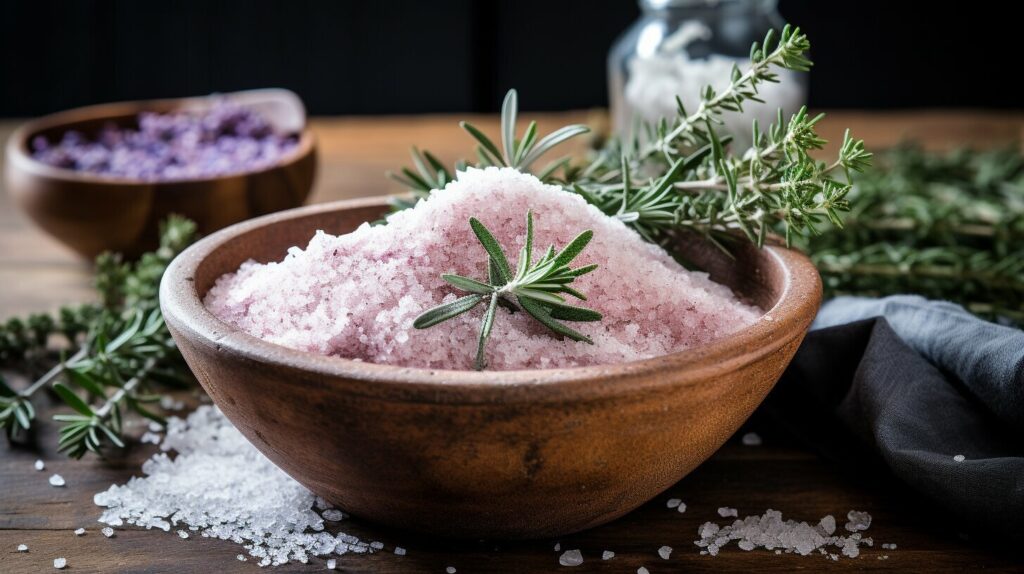
Use your herb-infused salt to season meats, vegetables, and even cocktails. Sprinkle it on popcorn for a savory snack or use it to rim the glass of a margarita for a flavorful twist. Add herb-infused sugar to baked goods, coffee, or tea for an unexpected burst of flavor.
Wild herb recipe inspiration: Experiment with different herb combinations to create your own signature blends. Try using rosemary and thyme for savory dishes or lavender and lemon verbena for sweet treats. The possibilities are endless.
Exploring Regional Wild Herb Recipes
Take a culinary journey with us as we explore the unique and diverse world of regional wild herb recipes. From coast to coast, the United States offers a plethora of traditional dishes that incorporate flavorful and medicinal wild herbs.
The Southwest
In the Southwest, traditional Native American cuisine features the use of wild herbs such as chiltepin, a small and spicy wild pepper, and epazote, a pungent herb that aids in digestion. Try your hand at making a wild herb salsa using chiltepin or adding epazote to a hearty bean stew.
The Pacific Northwest
The Pacific Northwest is known for its abundance of wild mushrooms, which pair perfectly with herbs such as rosemary and thyme. Regional favorites include mushroom risotto with thyme and chanterelle mushroom soup with rosemary.
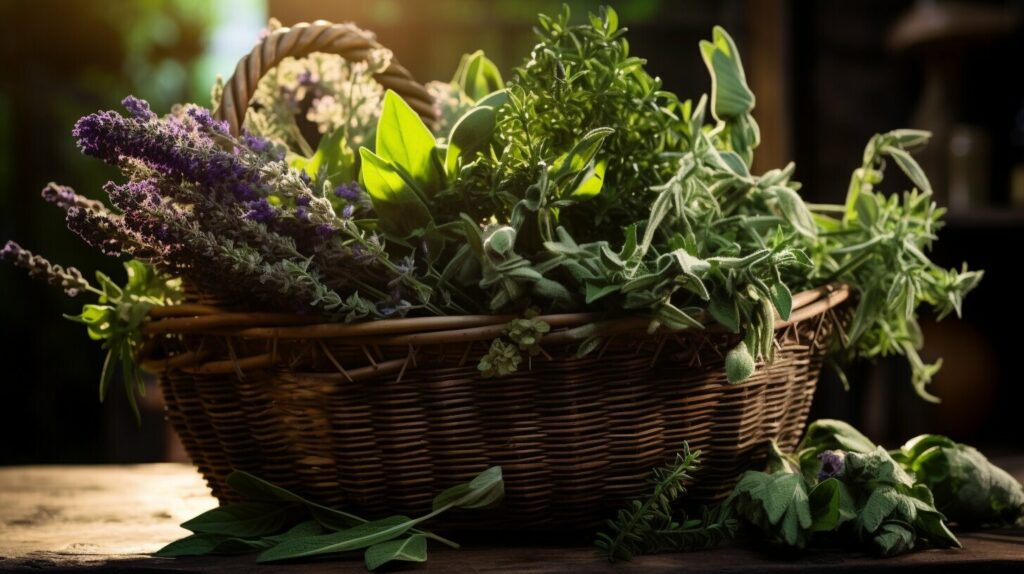
The Appalachian Mountains
In the Appalachian Mountains, ramps, also known as wild leeks, are a highly prized ingredient. The pungent and garlicky flavor of ramps is often used in soups, stews, and even in ramp pesto.
The Midwest
Midwestern cuisine utilizes wild herbs such as dandelion greens and wild garlic. Try incorporating these nutritious greens into salads or using wild garlic in a savory herb rub for grilled meats.
The Northeast
In the Northeast, fiddleheads, the curled tips of young ferns, are a seasonal delicacy. These tender greens have a slightly nutty and earthy flavor and are often used in salads, stir-fries, or sautéed with butter and herbs.
Exploring regional wild herb recipes is a great way to experience the local flavors and traditions of each area. Use the inspiration from these dishes to create your own unique wild herb recipes.
Conclusion
You’re now armed with the knowledge and inspiration to explore the wonderful world of wild herb recipes. By incorporating foraged botanicals into your cooking, you can add a unique twist to your meals while taking advantage of their health benefits.
We hope this article has opened your eyes to the versatility of wild herbs and the myriad of possibilities they offer in the kitchen. Whether you’re making pesto, soup, or salad, wild herbs can add depth and complexity to your dishes.
So, don’t be afraid to get creative and experiment with different herbs and flavors. With the tips and recipes we’ve provided, you can embark on your own culinary adventure and enjoy the tastes of nature.
FAQ
Q: What are wild herbs?
A: Wild herbs are plants that grow naturally in the wild, rather than being cultivated. They are often found in forests, meadows, and other natural environments.
Q: How can I identify wild herbs?
A: Identifying wild herbs can be challenging, but there are a few key characteristics to look for. Pay attention to the leaf shape, flower color, and overall growth pattern of the plant. You can also consult field guides or seek guidance from experienced foragers.
Q: Are wild herbs safe to eat?
A: Many wild herbs are safe to eat and are commonly used in culinary applications. However, it’s essential to be certain of the plant’s identity and ensure that it is free from pesticides or other contaminants before consuming it.
Q: How do I harvest wild herbs?
A: When harvesting wild herbs, it’s important to do so sustainably and responsibly. Only take what you need, and ensure that you leave enough plants behind for future growth. Use sharp scissors or pruning shears to cut the herbs cleanly, avoiding any damage to the plant.
Q: Can I substitute wild herbs for cultivated herbs in recipes?
A: Absolutely! Wild herbs can be a delightful substitute for cultivated herbs in recipes. They often have a more intense flavor profile, which can add a unique twist to your dishes. Just be mindful of any differences in potency, and adjust the quantities accordingly.
Q: How should I store wild herbs?
A: To store wild herbs, gently wash and dry them before placing them in an airtight container or bag. Keep them in the refrigerator to maintain freshness. Alternatively, you can also dry the herbs by hanging them upside down in a well-ventilated area.

